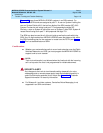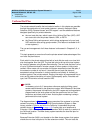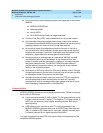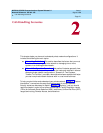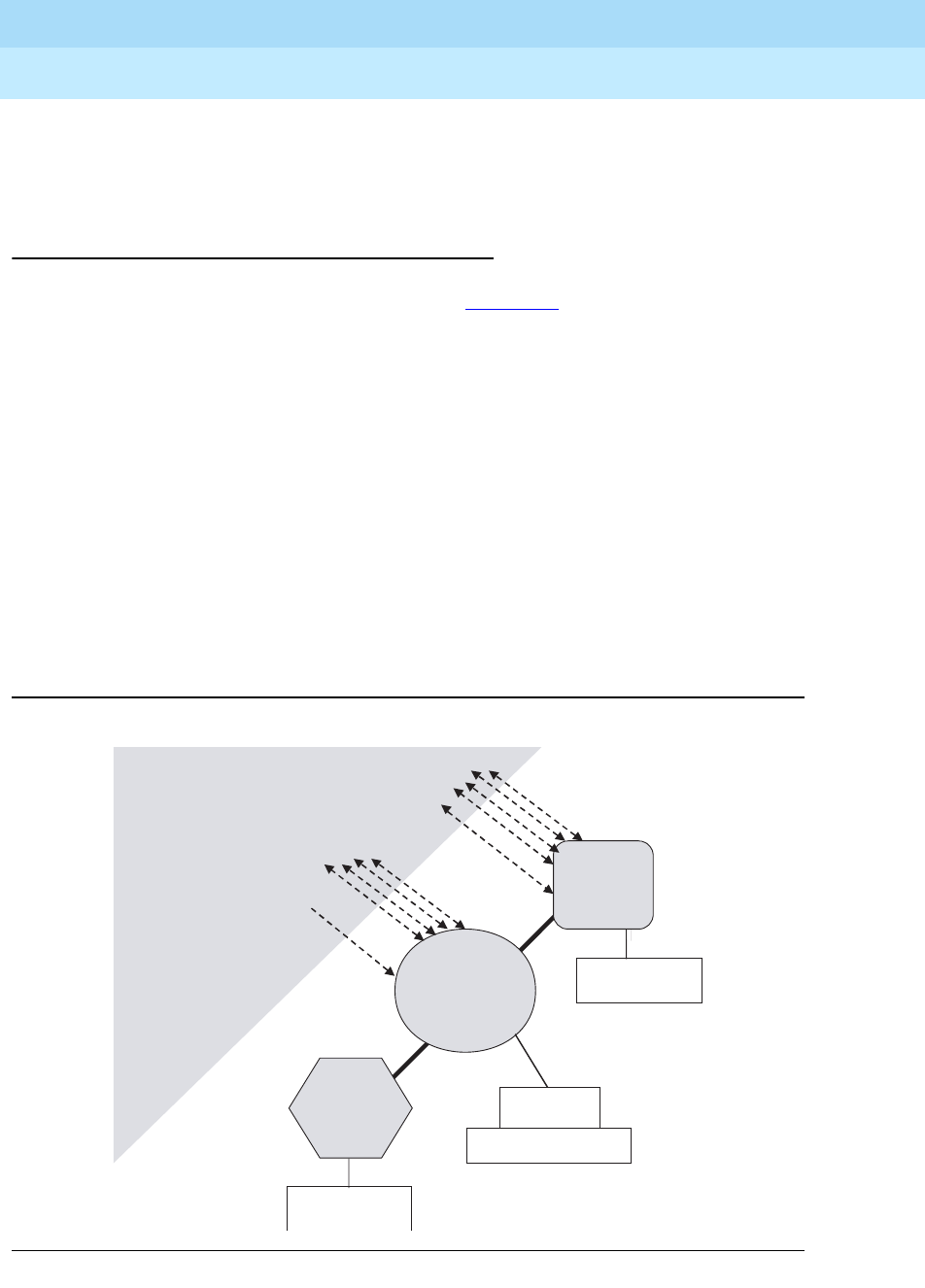
MERLIN LEGEND Communications System Release 6.1
Network Reference
555-661-150
Issue 1
August 1998
Introduction
Page 1-24Centralized Voice Messaging System
1
For information about centralized voice message programming, please see:
“Centralized Voice Messaging Programming” in Chapter 5. For information about
centralized automated attendant programming, please see: “Centralized
Automated Attendant Programming” in Chapter 5.
Example 1
For the purposes of this example, refer to Figure 1–9. A caller dials Extension
1234, a local extension on System B. Extension 1234 is assigned to a coverage
group programmed as an integrated VMI group (Extension 7771 with one non-
local member, extension 5528) as the receiver. The user at Extension 1234 is not
available and the call is directed to integrated VMI calling group 7771. The
systems checks the local dial plan then the non-local dial plan for the VMI calling
group member extension (5528). Using UDP routing, the system absorbs the 4
dialed digits (5528) and prepends the digits 7771 (the extension for the
centralized VMS/AA at the VMS hub) then routes the call over the PRI tandem
trunks to the centralized VMS/AA.
If the caller leaves a message, the centralized VMS/AA sends signals over the
signalling D-channel and the Message Waiting light at extension 1234 goes on.
When the user at extension 1234 dials 7771 to reach the centralized VMS/AA to
retrieve messages, the same routing takes place as before and when all
messages are retrieved, the centralized VMS/AA sends signals over the signalling
D-channel to turn off the Message Waiting light at Extension 1234.
Figure 1–9. Centralized Voice Mail with one VMS/AA for Entire Network
PSTN
PRI
PRI
PRI
PRI
ML A
GS
ML C
ML B
V o ic e M a il/A u to A tte n d a n t
GS
Integrated VM I
x7771
(one non-local m em ber)
Integrated VM I
x7771
(VM S voice ports)
Integrated VMI
x7771
(one non-local m em ber)





